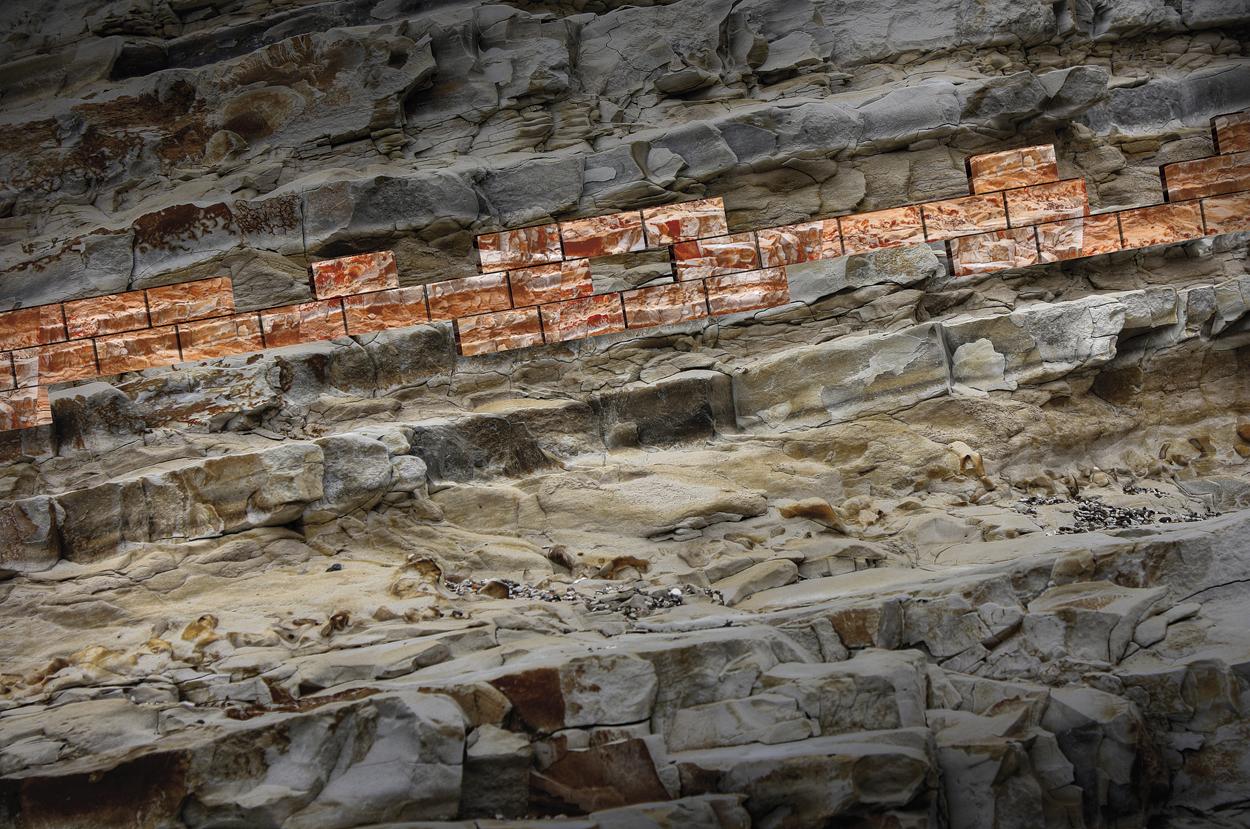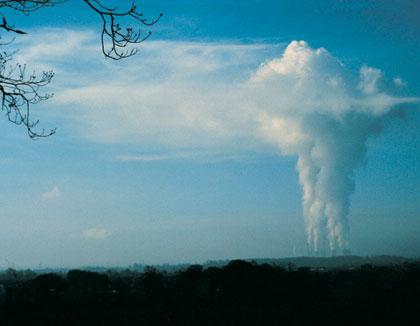Anthropocene: Do we live in a new era?
2012/01/01 Iriarte, Eneko - GeologoaGiza Eboluzioaren laborategia Iturria: Elhuyar aldizkaria

At present, several scientists say that the Earth is crossing a new stratigraphic border. There are profound transformations that can leave a distinctive mark on the rocks, and on this occasion, unlike others, the human being is the cause of these transformations. For many geologists and biologists, our planet is entering a new geological era, the so-called Age of Man, the Anthropocene. Human activity is assimilated to other geological processes that have led to the evolution of the Earth, and that means that to a large extent the details of the future of the Earth are in our hands.
Since it was proposed informally in 2002, the term Antropozeno began to be used in more and more publications. Thus, in 2009 the International Commission of Stratigraphy (ICS) initiated a formal debate on the new geological unit of the Anthropocene and constituted a working team. The first conclusions of this working group were published in February 2011 in a monograph of the journal Philosophical Transactions of the Royal Society A. In the geological register, a series of characteristics have been found that would serve to differentiate the Anthropocene from previous eras.
What are the characteristics that the Anthropocene would define? What major changes would future geologists find in the rocks corresponding to the new era? From the domestication of plants and animals to the creation of contemporary cities, throughout the Holocene, in the last 11,500 years, man has continually transformed the environment. Until recently, the human being could only change the environment to a small scale. However, the Industrial Revolution increased this capacity, causing human influence to be global and that the changes produced were similar to those produced throughout geological history.
According to experts, man has transformed 80% of the surface of the continents. Of these, 38% has become agrarian soil and forest plantations exceed those of natural origin. Deforestation due to livestock and agricultural exploitation would easily stand out when analyzing the rocks of the Anthropocene and its pollen content.
The cities and infrastructures created by the human being, as well as the remains of building materials and synthetic materials used in them, would leave colorful remains of the place. Although erosion destroys most of the built areas, the cities and structures of sedimentary areas would be preserved among sediments. On the other hand, mining and other excavations provoke four times more sediments than the rivers and glaciers of the Earth, becoming one of the most abundant sedimentary processes in the generation of sediments caused by man.
Effects on oceans and continental waters would also be observed. Without forgetting the reservoirs and canalizations built in the riverbeds, the exploitation of the underground waters or the melting of the glaciers, it would be evident the acidification caused by the increase of the content of CO 2 in the atmosphere in the current oceans. The acidification of marine water means a decrease in the degree of saturation of aragonite. Aragonite is the main mineral component of the corals and coquillas of carbonate of other marine beings, so the decrease of the aragonite saturation of the marine water would imply its decrease or disappearance.
Probably, the principal and most obvious change produced by man is the chemical and isotope change produced in the composition of the Earth. At present, the terrestrial surface is being enriched in the light isotopes of carbon ( 12 C), due to the burning of fossil fuels, and this change is already quantifiable in corals, planktonic foraminifers or other aquatic beings accumulated in current sediments. The geochemistry of anthropocene rocks would also show the appearance of new chemicals such as PCB, plastics, new radioactive isotopes from nuclear or metallic aluminum explosions and non-natural nitrates in nature. Changes in the composition of the atmosphere, such as the increase in greenhouse gases CO 2 and CH 4 and the decrease in ozone, as well as the consequences derived from chemical pollutants, are already evident the climate change and the warming.
Changes in biodiversity would also stand out with ease in the content of rock fossils of the new era. At present, man and domesticated animals represent 90% of the biomass of current vertebrates, compared to 0.1% of 10,000 years ago. In addition, some biologists predict that excess hunting, fishing, habitat loss, pollution and climate change will cause the sixth massive disappearance of Earth's history.
There are also researchers against the view that we are entering the anthropocene. Some say that the stratigraphic record of the Anthropocene (sediments and rocks) is still very small and have serious doubts as to whether all previous processes will leave a mark and its representativity. Others consider that the limit of the beginning of Anthropocene has not yet reached, since in the next decades there will be changes that can be stratigraphically more significant. The decision is not easy, unlike the chronostratigraphic units defined so far, since it is a period to be defined during the Anthropocene period and not after it occurs. This implies a change in the usual way of working of geologists. And change… always generates debate.
The working group on anthropocene will make its final report for 2016. Subsequently, the International Association of Geological Sciences (IUGS) must decide by vote whether the Anthropocene deserves a new era, period or epic. The process can be extended for several years, decisions that have become a process of debate for decades.
However, the debate on the formalization of Anthropocene is expected to serve to advance its scientific research and to raise awareness to society of the profound changes that are taking place today. J. Paul En Crutz, the 1995 Nobel Prize in Chemistry (for his research on ozone changes) is the creator of the debate on the concept of anthropocene. According to his opinion, the most important aspect of the debate on Anthropocene is not the creation of a new formal unity. In the opinion of Crutzen, the importance of the debate goes beyond: fostering collaboration between scientists can serve to know and avoid possible future changes; it hopes that the Anthropocene, more than a geological unit, is an annotation for society. So be it.

Gai honi buruzko eduki gehiago
Elhuyarrek garatutako teknologia





